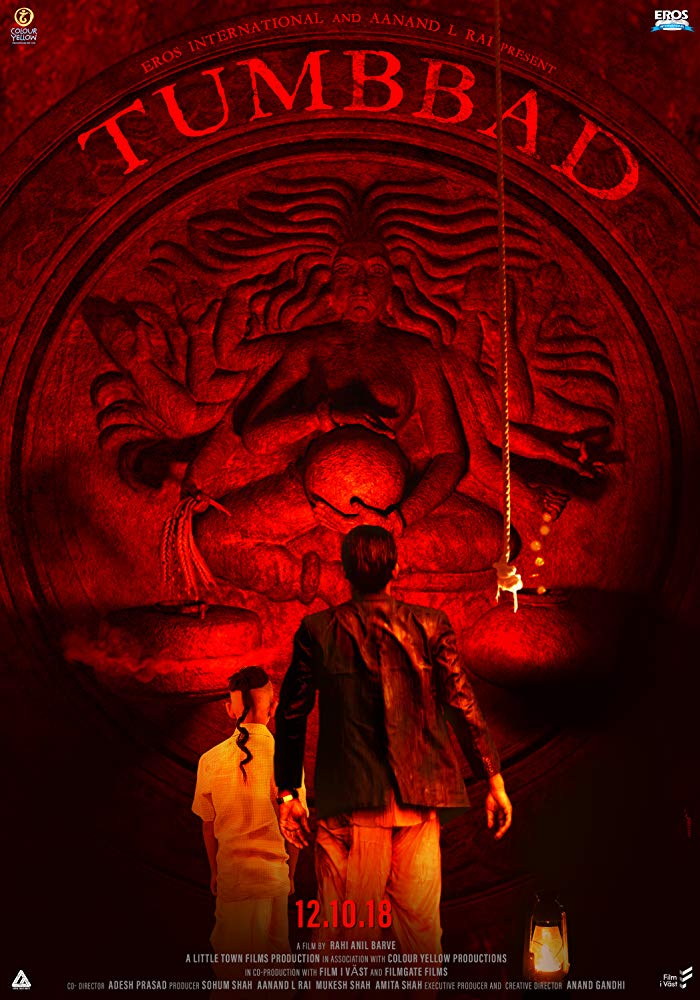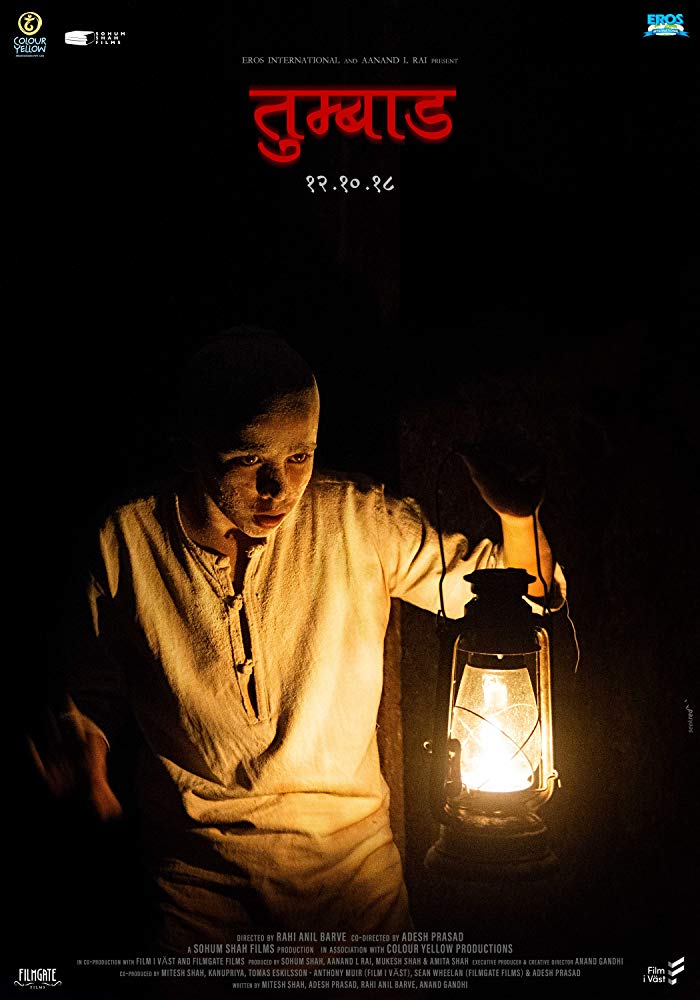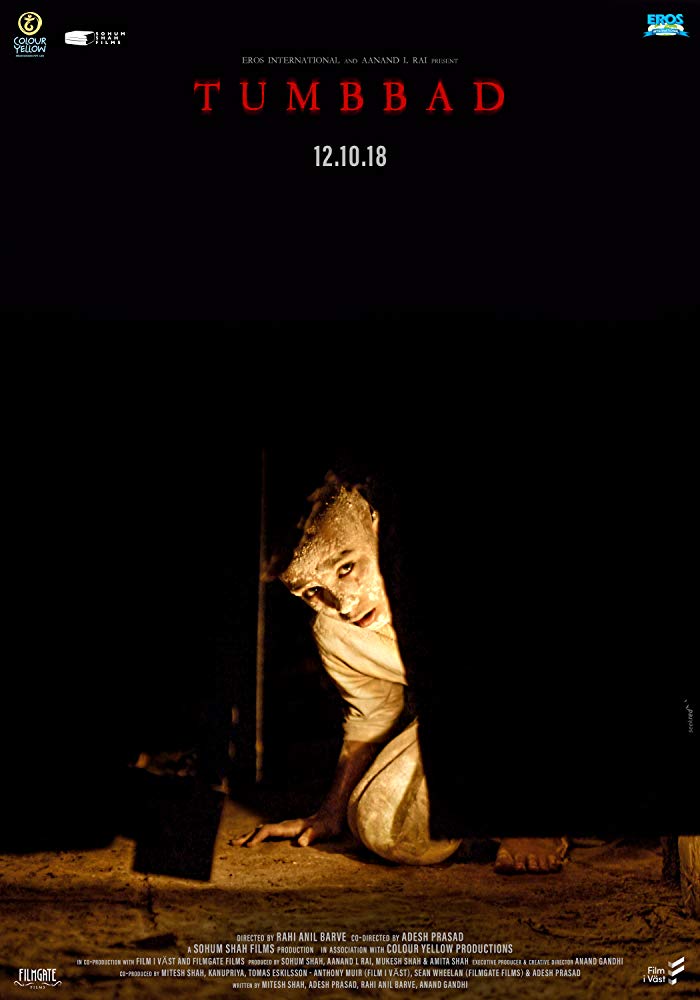
Who doesn’t love a solid Indian fable? Okay, okay, while this might not actually be typical cinematic fare for a majority of audiences, those of you who love genre films are likely saying an emphatic “hell yes!” right now. Some of my favorite festival experiences come from foreign films I have zero idea about and have crazy weird premises, and TUMBBAD is certainly no exception.
The movie revolves around an age-old legend about a goddess who saves the world from her greedy son while also preventing his eternal damnation by forever hiding him within her womb. Flash forward a millennium or two later when a widowed mother is left in charge of the mysterious and gruesomely cursed matriarch of her family. The curse, eternal life, is due to the same greed that plagued her ancient ancestor. While the origin story sounds entirely fantastical, it is revealed that the story is actually way more literal than anyone could possibly conceive. It turns out that the parable is very real as one of the widow’s sons hatches a plan to harness the endless riches concealed in the hidden tomb/womb on his family’s estate. As with all morality tales, however, greed has its unfortunate downfalls, and our protagonist learns that his avarice comes with a high price tag. The film not only chronicles the life of the boy-turned-man who temps fate by avoiding the curse in order to obtain riches, it also shows a fascinating era of Indian culture in the early 20th century.

While vividly illustrating rural and urban life during the turn of the century in India, the film also has a fascinating mystical aspect. The main character has to challenge the very real demon in the “womb” in order to attain his riches, and each endeavor is terrifying as he defies his monstrous opponent. Later in the story when his innocent yet conniving son wants in on the bounty, the true stakes of their exploits become more poignant.
Aside from all the high concept themes, TUMBBAD is a creepy children-in-peril film with scary monsters to boot. The period piece context of the story serves as a perfect contrast to the timeless terror that unfolds while also nicely grounding the phantasmagoric elements of the film. The story has lots of heart without betraying the horror elements throughout. It is an extremely well-rounded effort.

The effects in the film are, well, effective in both gross-out and creep-out terrain. While the film covers a ton of chronological ground, it never veers too far away from the horror that is the heart of the story visually and conceptually. Kudos to co-directors Rahi Anil Barve, Anand Ghandi, and Adesh Prasad for creating such a compelling period piece that is also creepy as well. Hopefully everyone will get a chance to check out this this freaky, beautiful film soon. Thanks for reading.
Until next time,
Rebecca Elliott
aka Annette Kellerman

